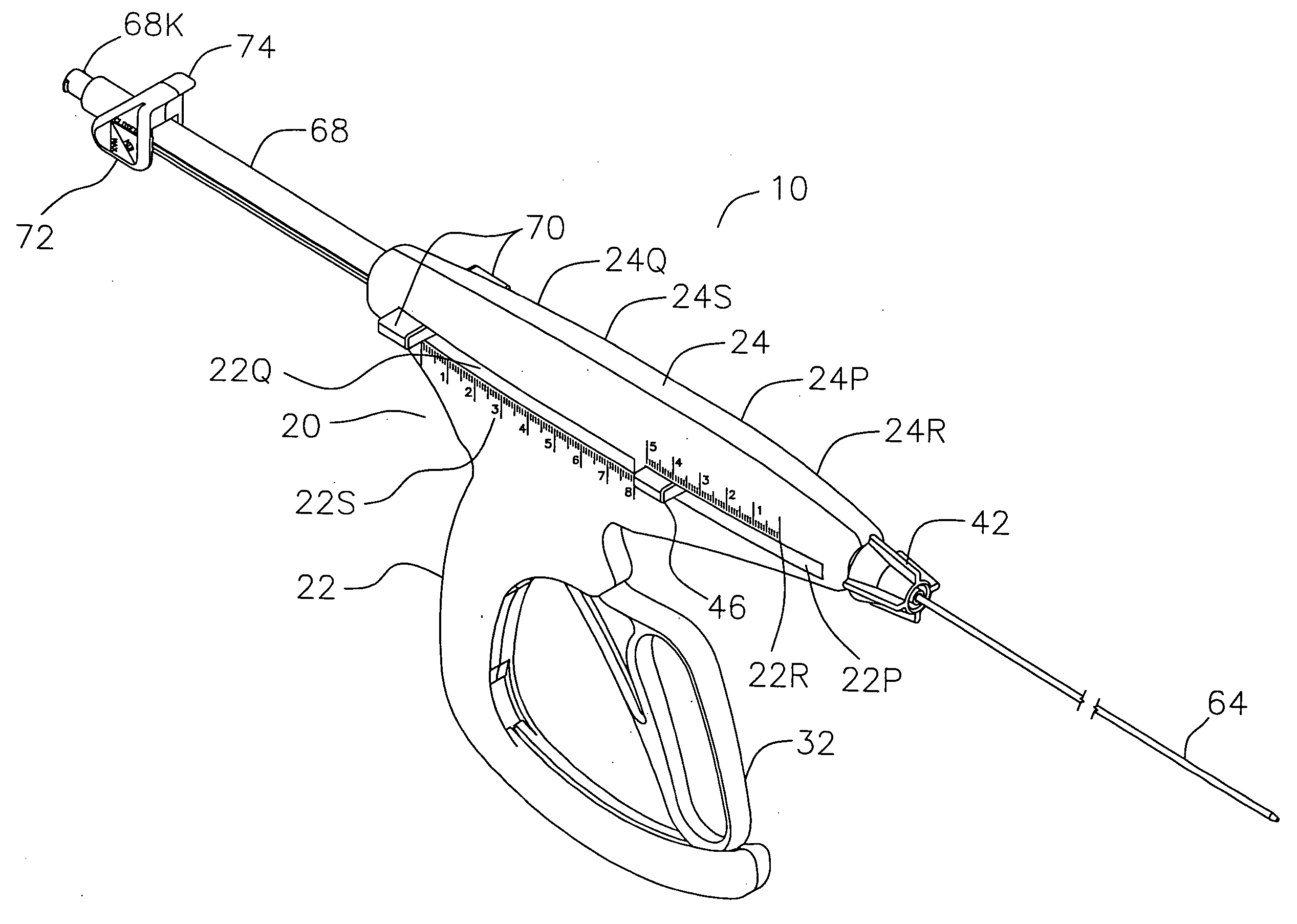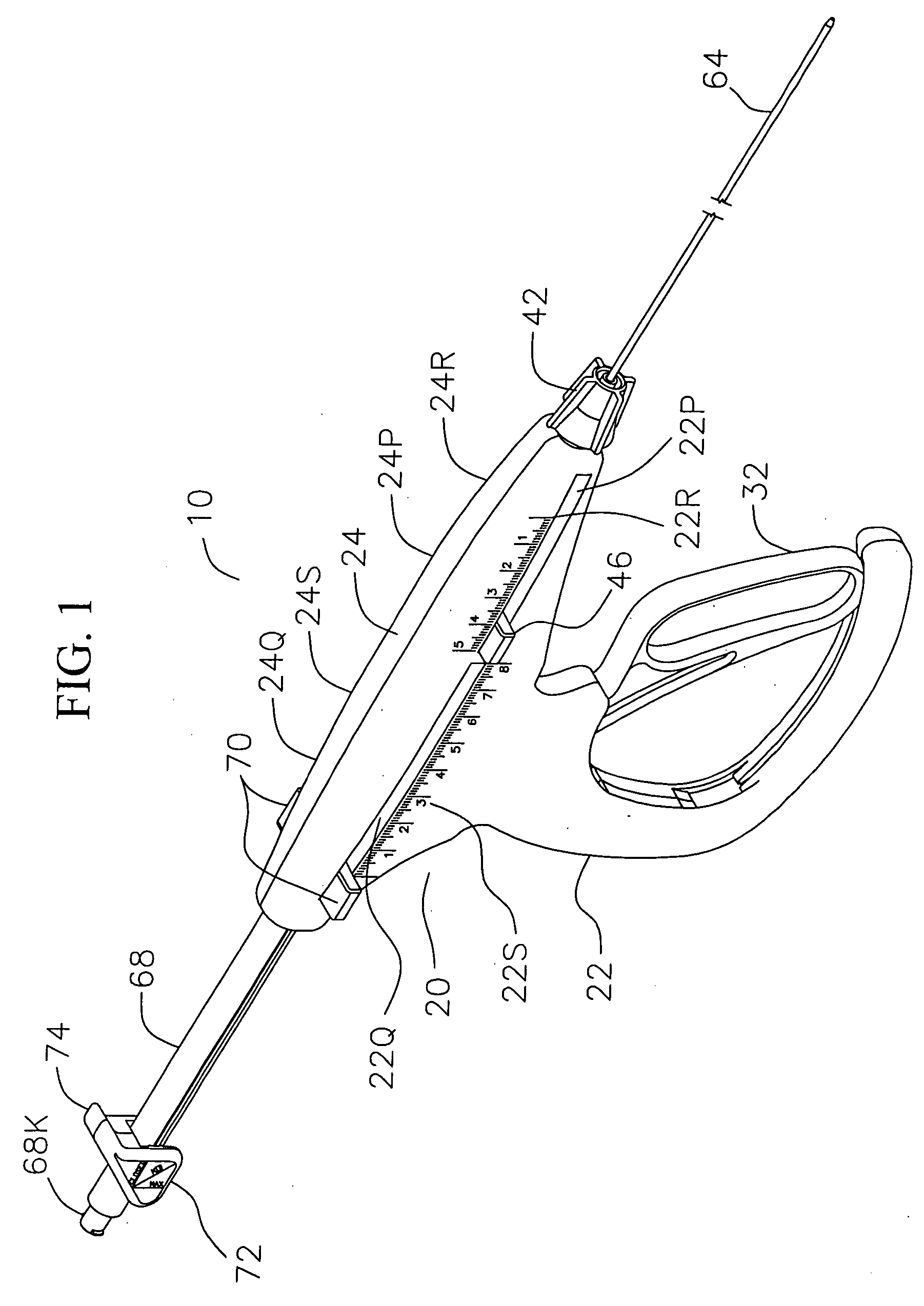Ergonomic needle tissue harvesting instrument not requiring a stylet
a needle tissue and ergonomic technology, applied in the field of needle tissue harvesting instruments, can solve the problems of not providing sufficient data to establish important diagnoses, little functional improvement in design since, and non-invasive diagnostic techniques, and achieve the effect of effective and safe specimen harvesting
- Summary
- Abstract
- Description
- Claims
- Application Information
AI Technical Summary
Benefits of technology
Problems solved by technology
Method used
Image
Examples
Embodiment Construction
[0068] In accordance with a presently preferred embodiment of the invention, a medical diagnostic instrument is provided for the ergonomic, effective and safe harvesting of specimen at targeted remote tissue sites. The instrument includes a pistol grip style handle with a hand activated lever, customized adjustment features and a specialized elongated flexible double tube needle shaft inside of a protective sheath. For clarity, these novel design features will be presented here in the sequence that they are typically encountered in a routine EUS-FNA procedure. The instrument is attached to port in the proximal end of an echoendoscope with its sheathed flexible needle shaft placed within the scope's working channel. The length of needle shaft positioned inside the echoendoscope is adjusted using the button mediated needle shaft length adjustment feature. After imaging the location of the targeted lesion, the needle penetration depth is set by moving another set of buttons. With a squ...
PUM
 Login to View More
Login to View More Abstract
Description
Claims
Application Information
 Login to View More
Login to View More - R&D
- Intellectual Property
- Life Sciences
- Materials
- Tech Scout
- Unparalleled Data Quality
- Higher Quality Content
- 60% Fewer Hallucinations
Browse by: Latest US Patents, China's latest patents, Technical Efficacy Thesaurus, Application Domain, Technology Topic, Popular Technical Reports.
© 2025 PatSnap. All rights reserved.Legal|Privacy policy|Modern Slavery Act Transparency Statement|Sitemap|About US| Contact US: help@patsnap.com



